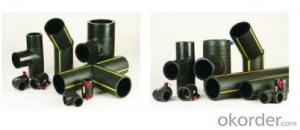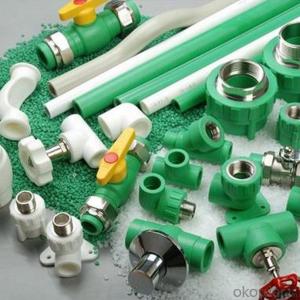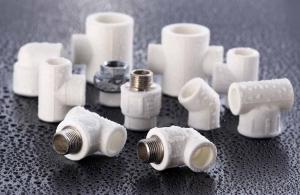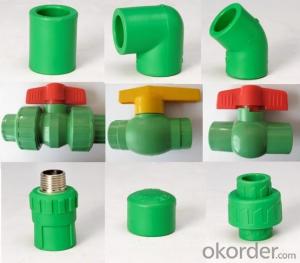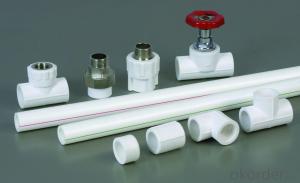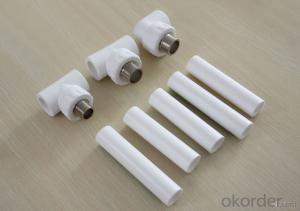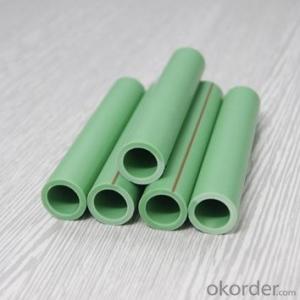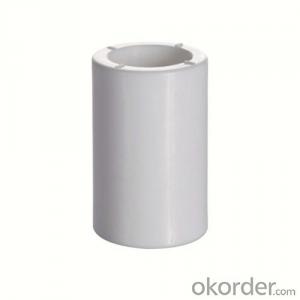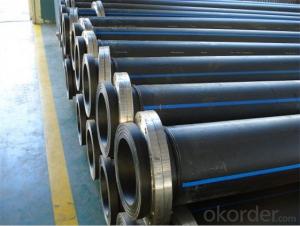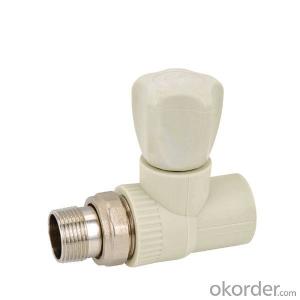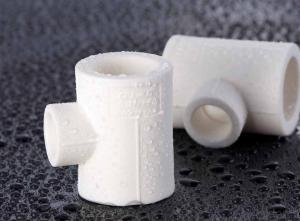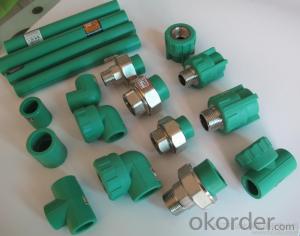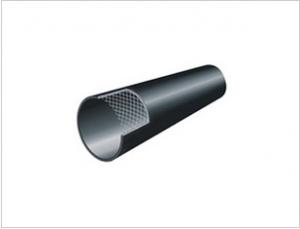1 Inch Plastic Pipe Fittings - PE Gas Pipe Fittings
- Loading Port:
- China Main Port
- Payment Terms:
- TT OR LC
- Min Order Qty:
- -
- Supply Capability:
- -
OKorder Service Pledge
OKorder Financial Service
You Might Also Like
Specifications of PE Gas Pipe Fittings:
1. Imput Voltage: 39.5V
2. Raw Materials: PE80 / PE100
3. SDR Rating: SDR11 /SDR17
4. Dimensions (mm): size ranging from 20mm to 630mm,
5. Pin Diameter: 4.7mm
Standard and Applications of PE Gas Pipe Fittings:
Aton PE Gas pipe and fittings complies with ISO 4437, EN1555-3, EN12201-3. GB15558.2,GB13663.2
Mainly use in supply of gaseous fuels, including natural gas, coal gas, gaseous liquefied petroleum gas, etc..
Advantage:
Light weight, flexional capability, low frictional coefficient, no scaling, resistance to gas constituents,
chemical resistance, long service time, etc.
The connection of piping system can be butt fusion by heating
or electro fusion, which providing you a no-leakage system.
- Q: Do plastic pipe fittings require special tools for installation?
- Yes, plastic pipe fittings often require special tools for installation. These tools may include pipe cutters, deburring tools, and heat guns for joining pipes using solvent welding or fusion methods. Additionally, some types of plastic pipe fittings may require specialized crimping or compression tools for secure installation.
- Q: Are plastic pipe fittings resistant to moisture?
- Yes, plastic pipe fittings are generally resistant to moisture.
- Q: Are plastic pipe fittings resistant to vibration?
- Yes, plastic pipe fittings are generally resistant to vibration due to their flexibility and ability to absorb shock and movement. However, the level of resistance may vary depending on the type and quality of the plastic used in the fittings.
- Q: Can plastic pipe fittings be used for geothermal heating systems?
- Yes, plastic pipe fittings can be used for geothermal heating systems. Plastic pipes, such as high-density polyethylene (HDPE), are commonly used in geothermal applications due to their durability, corrosion resistance, and flexibility. Plastic pipe fittings designed for geothermal systems are specifically engineered to withstand the unique requirements of geothermal heating, including high temperatures and chemical resistance.
- Q: Can plastic pipe fittings be used for gas piping systems?
- No, plastic pipe fittings should not be used for gas piping systems. Gas piping systems require materials that are specifically designed and approved for use with gas, such as steel or other approved metallic materials. Plastic fittings may not be able to withstand the high pressures and temperatures associated with gas distribution and can pose a safety hazard.
- Q: Are plastic pipe fittings compatible with PVC pipes?
- Yes, plastic pipe fittings are generally compatible with PVC pipes. PVC (polyvinyl chloride) is a type of plastic commonly used in plumbing, and plastic pipe fittings are designed to connect various types of plastic pipes, including PVC pipes.
- Q: Are plastic pipe fittings resistant to ultrasonic vibrations?
- Yes, plastic pipe fittings are generally resistant to ultrasonic vibrations.
- Q: How do you connect plastic pipe fittings to ABS pipes?
- To connect plastic pipe fittings to ABS pipes, you can use ABS cement or solvent cement specifically designed for ABS pipes. Apply the cement to the outside of the ABS pipe and the inside of the plastic fitting, then quickly join the two pieces together and hold them firmly for a few seconds to ensure a strong bond.
- Q: Can plastic pipe fittings be used for compressed air energy storage?
- No, plastic pipe fittings are not recommended for compressed air energy storage. Compressed air systems require high-pressure applications, and plastic fittings may not have the necessary strength or durability to handle the pressure. It is advisable to use fittings made from materials like metal, such as steel or brass, which can withstand the high pressures involved in compressed air energy storage.
- Q: What are the advantages of using plastic pipe fittings?
- There are several advantages of using plastic pipe fittings. Firstly, plastic fittings are lightweight and easy to handle, making installation much simpler and faster. They are also resistant to corrosion, which ensures a longer lifespan compared to metal fittings. Additionally, plastic fittings are cost-effective, as they are generally less expensive than their metal counterparts. Plastic fittings are also more flexible, allowing for easier adjustment and alignment during installation. Lastly, plastic fittings have smooth surfaces, reducing the risk of leaks and providing better flow characteristics.
Send your message to us
1 Inch Plastic Pipe Fittings - PE Gas Pipe Fittings
- Loading Port:
- China Main Port
- Payment Terms:
- TT OR LC
- Min Order Qty:
- -
- Supply Capability:
- -
OKorder Service Pledge
OKorder Financial Service
Similar products
Hot products
Hot Searches
Related keywords
